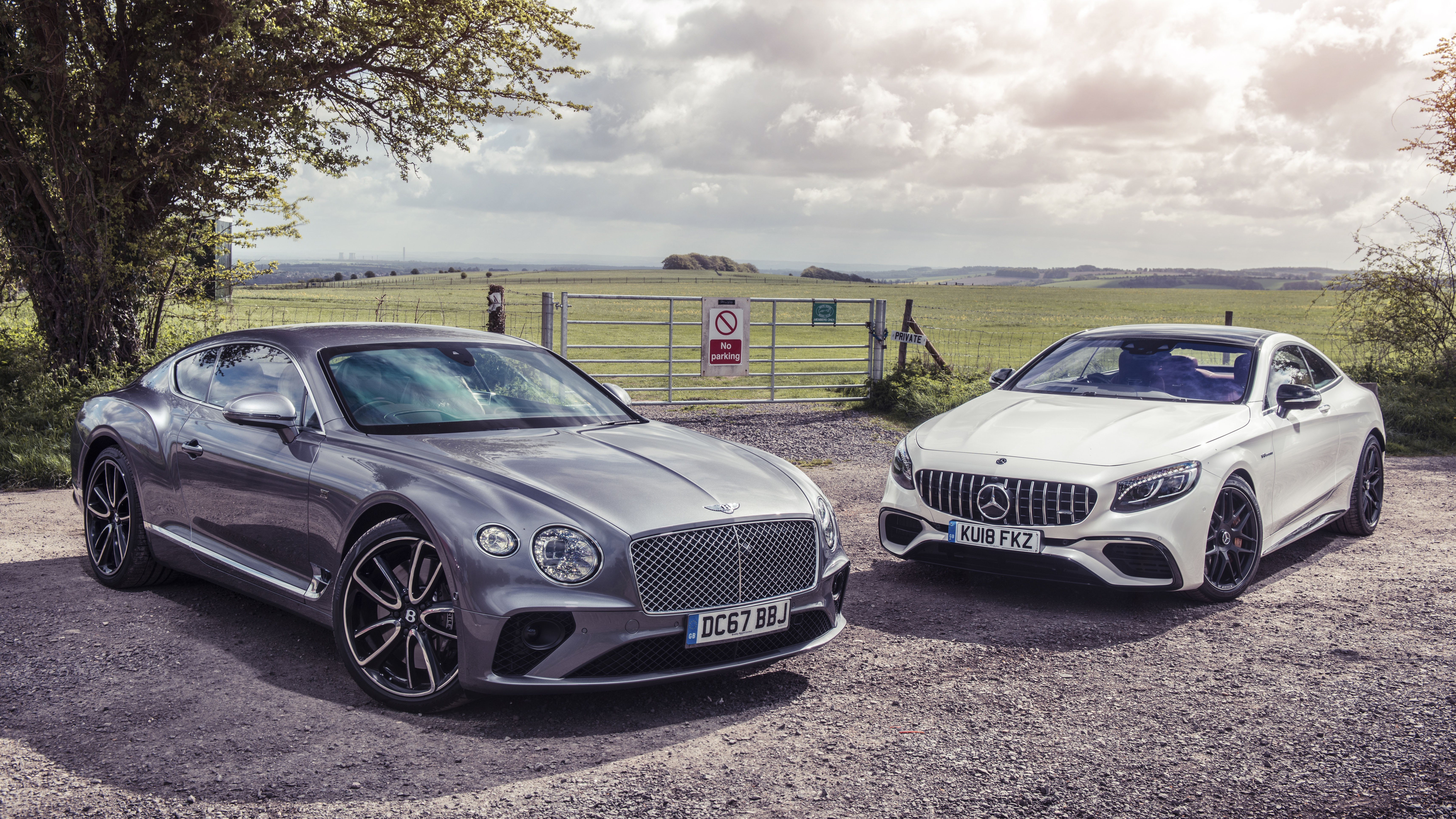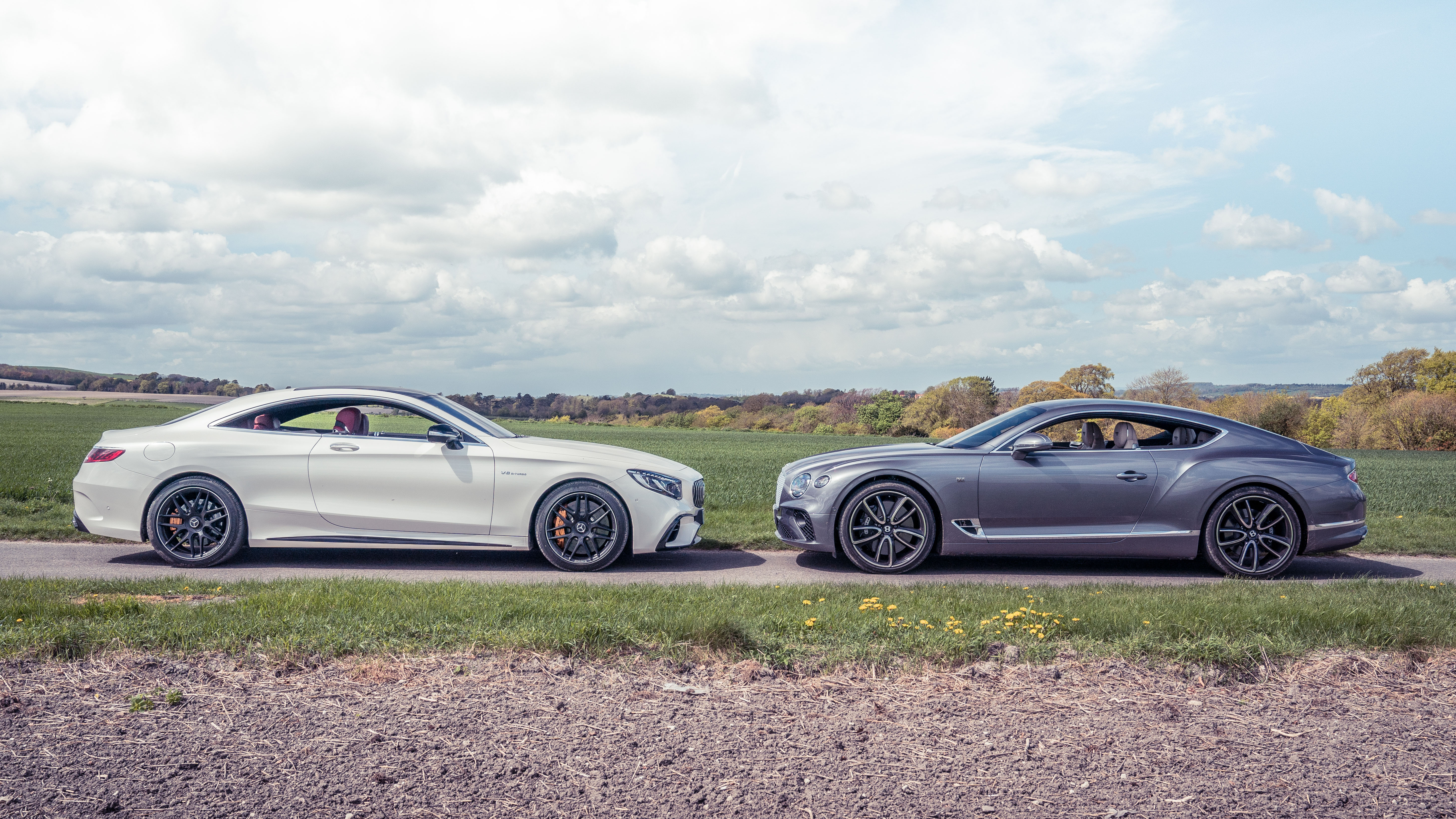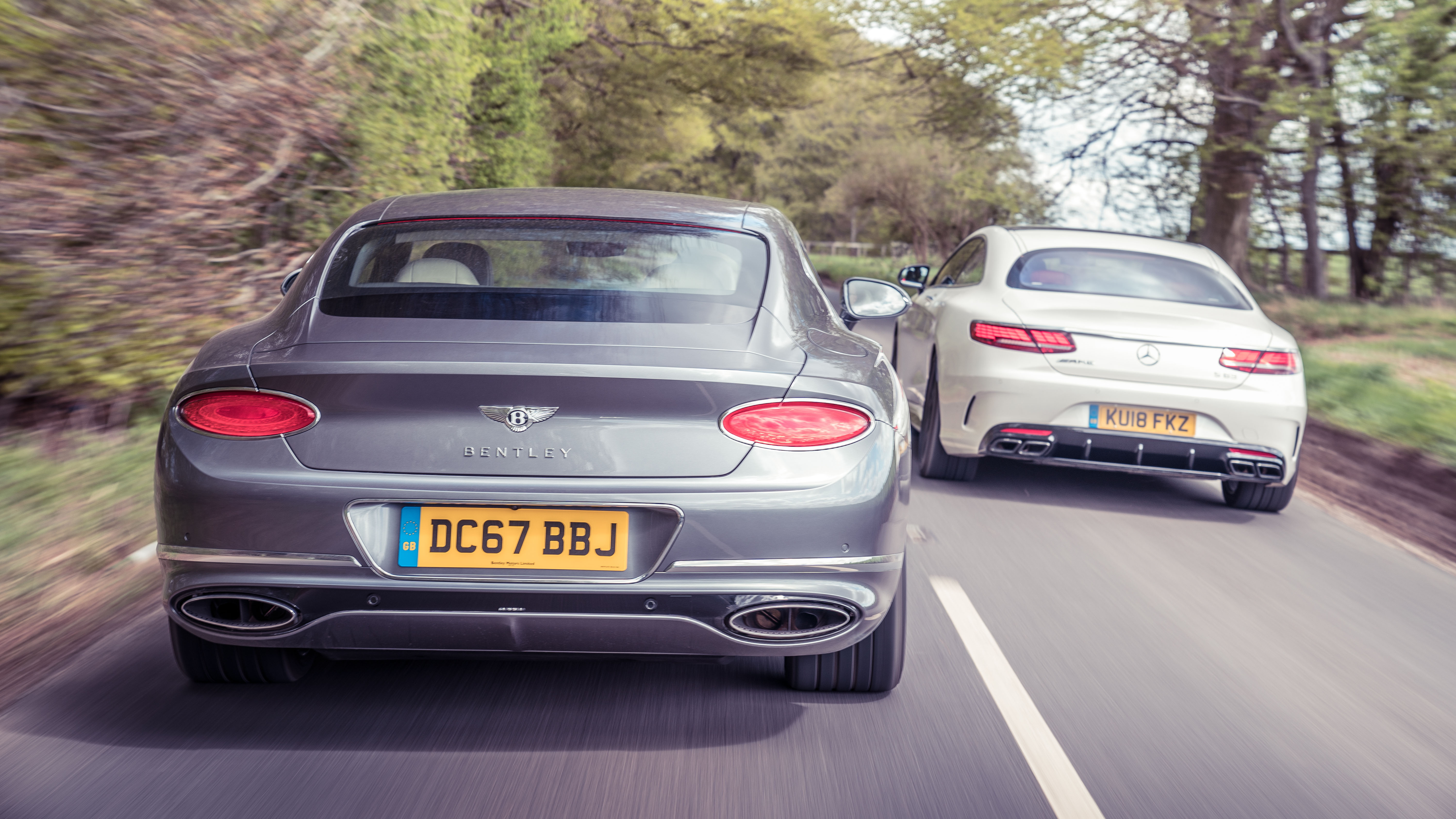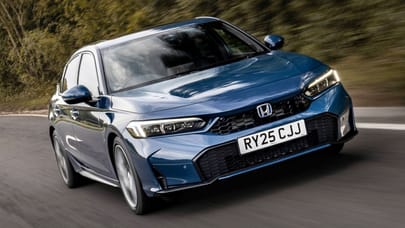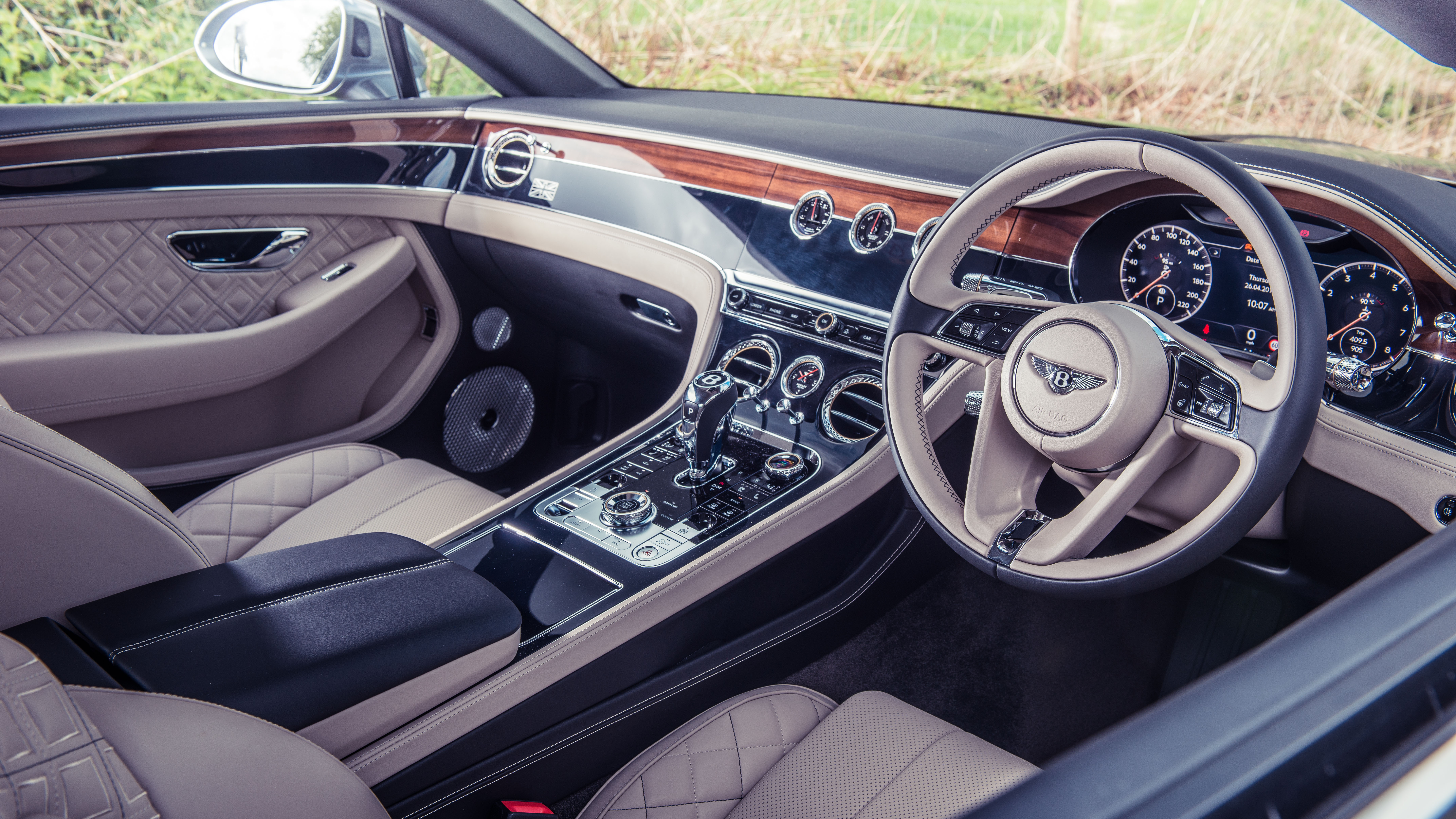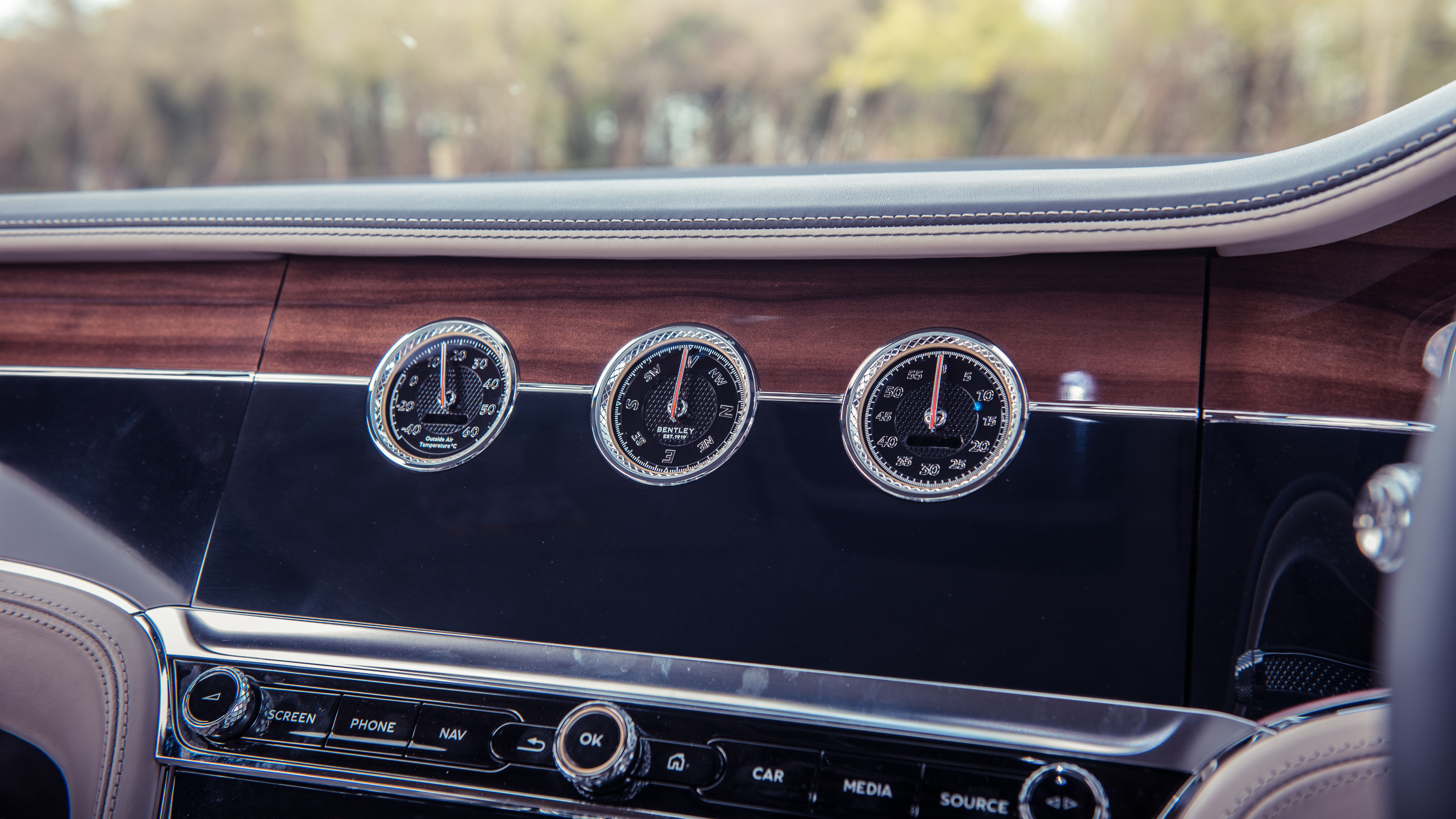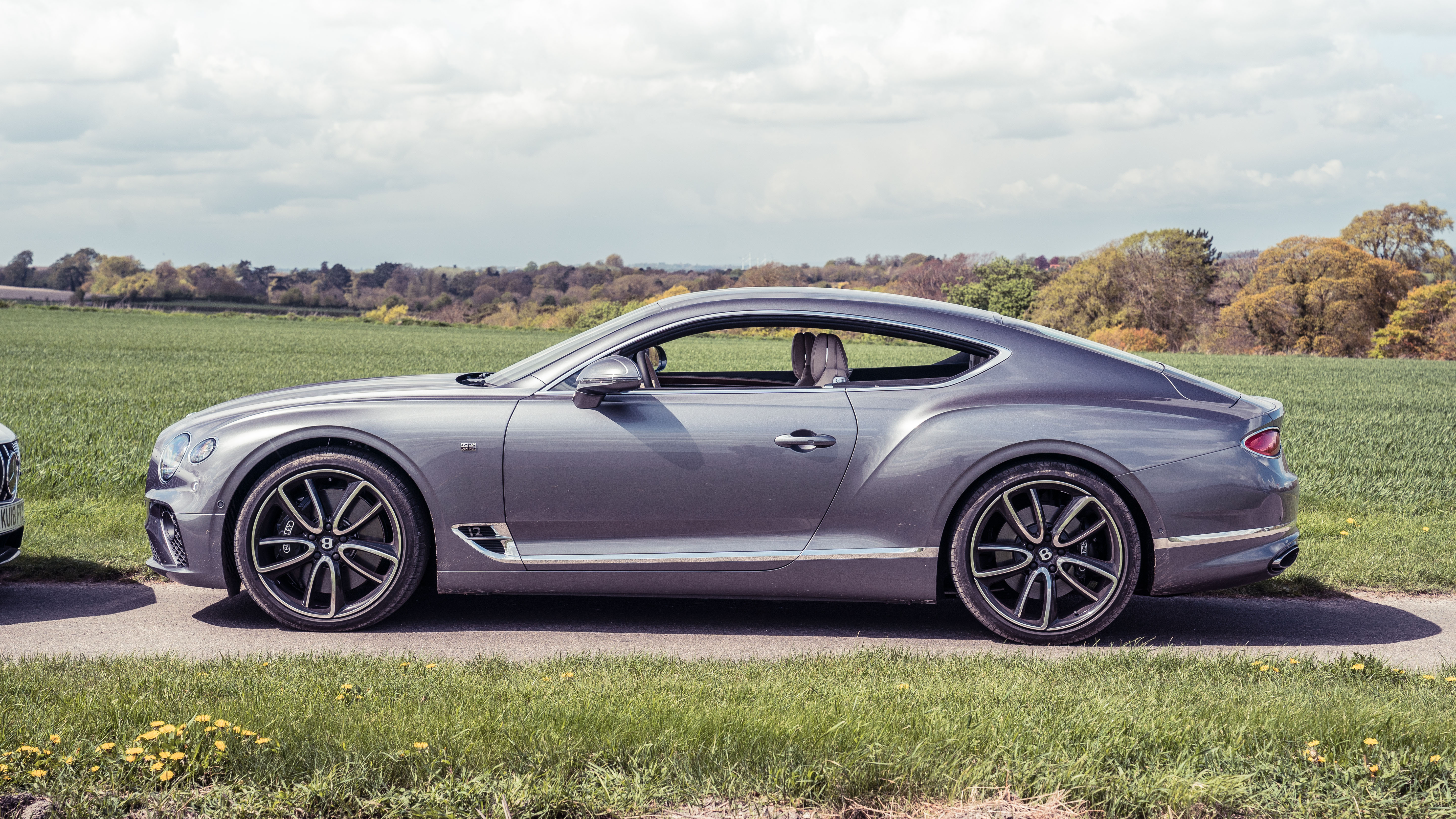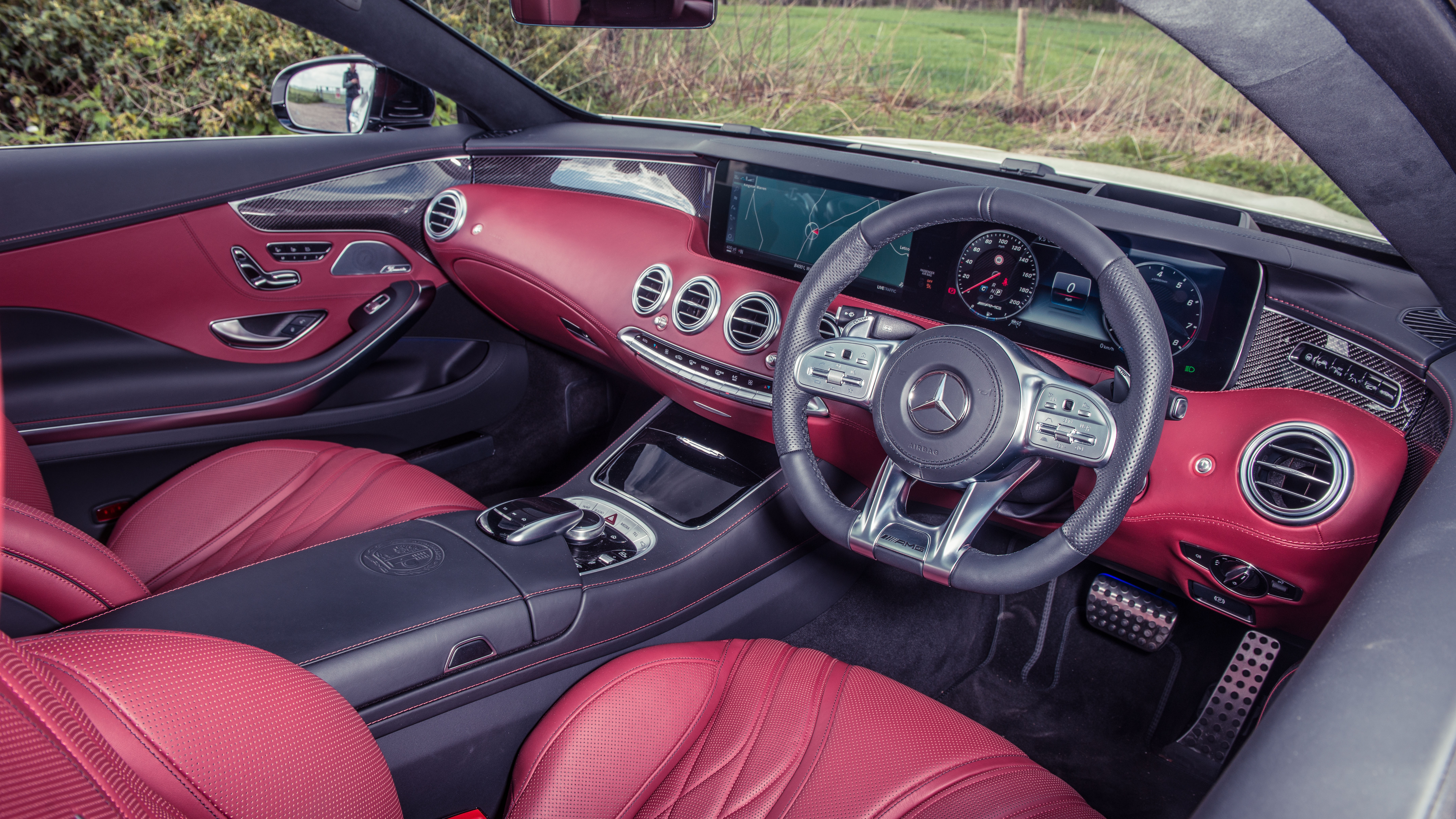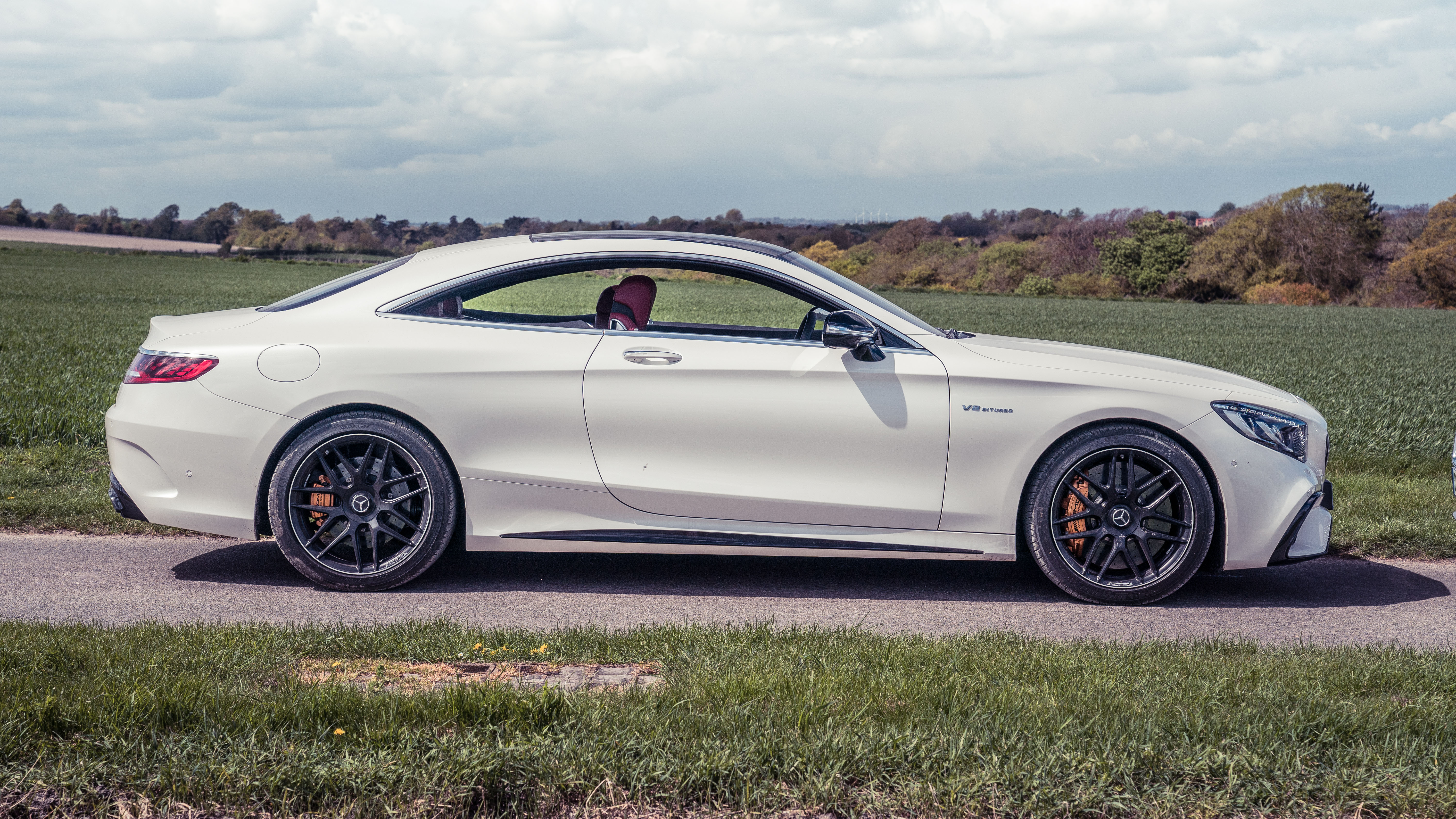
Bentley Continental GT vs Mercedes-AMG S63 Coupe
A heavyweight battle of the coupes as AMG's S-Class takes on Bentley's new GT
You get the feeling, sat in the Bentley, that life could only be better if you were chomping on a Cohiba. Yes, the Continental GT is the sort of car that demands a chunky cigar. The Mercedes-AMG S63 Coupe? Something less heavy, perhaps a dash more debonair. A cigarillo, perhaps?
Both contain a good streak of caddishness. These, after all, are the ultimate personal luxury cars. Who wants to be seen driving a regular S-Class saloon or Flying Spur? Those are cars for being driven in. No, for wafting about and looking effortless it needs to be one of these, ideally with all four windows dropped so the smoke can dissipate.
The Continental GT is the car that underpins and epitomises the whole Bentley range. Depressing though it is, it wouldn’t surprise me if the Bentayga outsells it, but this is the car Bentley must hang its ethos around. The old one had soldiered on since 2003. It had done a remarkable job, was still relevant and desirable, but Bentley has decided the best thing is to give the new one a nudge in a more dynamic direction.
Although its measurements are actually within a few millimetres of its predecessor, it appears lower, wider and longer and looks leaner and less jowly. Moving the front wheels 135mm further forward gives the front end more dynamism and significantly aids the weight distribution – essential since the last car was a nose-heavy old thing. Side on it’s a handsome machine, the rear is clean and smart too (until you notice the cross-section of lines and panel gaps around the pop-up spoiler), but come too far round the front and there’s a slight gawkishness to the juxtaposition of headlights and grille – does the grille maybe sit a touch low?
The Mercedes is merely a facelift of the existing car. No wholesale changes, but a slight lifting and tightening inside and out (suitable: it’s a car more in tune with cosmetic surgery than the Bentley). The biggest changes as far as we’re concerned have happened out of sight. The old 5.5-litre twin turbo V8 has gone, replaced by the more compact, efficient 4.0-litre from the E63 S. Compact and efficient aren’t words you’d expect to use when describing an S63 owner, but power and noise probably are. The 663lb ft torque peak remains, but power is up 27bhp to 604bhp. Considering the loss of displacement, that’s impressive.
The multi-clutch transmission now has nine speeds rather than seven, but in the UK it feeds all that oomph to the rear wheels alone. Only on the continent do you get the option of 4WD – a permanent system, not the E63’s switchable set-up. Rear-drive suits the image of the S63 perfectly, but in reality 4WD would work better. The S63’s stability control is kept very busy when you try to ‘maintain momentum’ on a tight road. It also has less outright grip then the Bentley (255/40 ZR20s fronts on the Merc versus 275/35 ZR22s) and the body control is looser.
Now this last was a surprise. The S63 has, as standard, Magic Body Control with curve tilting function – the suspension squats a little on the inside to keep the body level through corners. On smooth roads it’s remarkable for the way it glides along. But throw some good bumps in and it becomes more active and wayward. Then, the Bentley’s simpler suspension (adaptive dampers, 48 volt active anti-roll system working on the sway bars) plus 200kg of extra mass pressing it into the road give it notably better body control, plus its structure feels stiffer, too.
And there’s more. Open the bonnet and while the front wheels may have been shunted significantly forward, they still have to cope with 55 per cent of the weight (around 1,230kg…), and the engine still sits right above them. It should be a recipe for nose-heavy, ponderous handling. And yet that’s not the case. The Conti turns in crisply, doesn’t lean, feels balanced. It’s a heavy car, so making adjustments once you’ve committed to a line is more problematic, but it’s night and day better than the old one. It will carry speed, it brakes far better than ever before, it’s just that you’re not getting that much sensation from it.
And that’s what the S63 gives you more of. It’s up to you to decide whether this is appropriate or not in a fast luxury coupe. The Merc-AMG comes across as more of a sled. If you enjoy driving and like feeling the car move around underneath you, it’s probably the one. The steering and chassis are more communicative and the V8 makes a glorious noise – more intrusive and rorty than the bassy, mellow Bentley. But who at this end of the market drives like that? Personally I love the fact the S63 is a bit wild, that the back axle does fight and fidget during its attempts to disseminate 663lb ft of torque, but I also think the Conti GT fulfils the luxury GT handling brief better. It’s more dynamically competent and better able to contain, control and distribute its power.
Top Gear
Newsletter
Thank you for subscribing to our newsletter. Look out for your regular round-up of news, reviews and offers in your inbox.
Get all the latest news, reviews and exclusives, direct to your inbox.
Cruising? They both do that majestically well. Stability, security, silence – no complaints. Well, one actually. As we wrote in the first drive, in shifting the Conti GT in a more dynamic direction Bentley has lost a hint of the heft and waft that made its predecessor so stately on the road. It would be wrong to say the new one is more buffeted by surface; more that the sharpening of the controls and responses is bound to pass more information back to the driver.
Purposefully so. Bentley makes no bones about the fact that buyers demanded the car was more athletic and faster. Which is why the W12 engine packs such a massive punch. It caught me unawares to start with, I went for an easy kickdown and received a sledgehammer in the back. Soft, swelling surge has given way to eagerness. It takes a bit of getting used to.
Traction issues mean you have to be more circumspect with the Merc at low speeds, but once powering along it’s every bit as fast, if not faster. The twin turbo V8 has less inertia in it, meaning it’s more immediate, and the gearshifts are punchier, too.
The Merc is perhaps even more hushed when soaking up motorways – the sealing on both cars where front side glass butts up against rear with no pillar is astonishing – but the ruffles of wind that j-u-s-t disturb life on board the Bentley are entirely absent from the Mercedes. But I’d choose to do distance in the Continental for two main reasons – seat comfort (the Merc’s are over-stuffed and over-complex), and the way the Bentley carries momentum.
Both will travel the thick end of 400 miles between fill-ups, the Merc having done 26mpg to the British car’s 23mpg, the Conti’s ten-litre larger fuel tank assisting its range.
Then we come to the interiors. Let’s deal with practicality first. These are front seat cars. You don’t want the indignity of trying to post yourself into the back, nor the limited legroom you’ll ‘enjoy’ back there. The Merc is marginally more generously proportioned, and has a 400-litre boot to the Bentley’s 358 litres.
This is all largely irrelevant. The truth of the matter is that after the sumptuous Bentley the Mercedes comes across as a bit bare inside. A bit empty and down market. It doesn’t make you feel good to the same extent. Sure, there’s lots of tech to interact with and the mighty Burmester sound system is included as standard (you have to pay £6,500 for the even mightier Naim system in the Bentley), but the overall ambience, the sense of indulgence, the way you’re cossetted by the car… it’s the Continental that does that better.
But you pay for it. You want the optional rotating display? Of course you do – making the central screen behave like James Bond’s numberplate and flip around to show dials or plain wood lowering the cabin’s tech overtones in the process, all millimetrically perfectly lined up, is just the sort of subtle, yet cool feature that Bentley should be doing. But that’s £4,700. And you’ve laid out £30,000 more to have the Bentley in the first place. Put it this way: broadly speaking these two cars were equivalently well equipped with options. The Mercedes listed at £155,960, the Bentley at £208,060 (a figure considerably lifted by the £34,800 First Edition specification this one wore, which is almost all cosmetic). For what you’re getting I think the Bentley looks just as good value for money despite the extra cost.
But value is irrelevant, we know it’s not cigar-chompers who buy these cars, but those who want to be seen to have spent money – remember the Bentayga was marketed as the car for whom a Range Rover was not expensive enough. Deciding value is not our business, deciding which fulfills its role better is.
It’s not the Mercedes. There’s a lot to love about it – the way it looks (apart from the front grille), the way it sounds, the way it goes, but it now feels like it needs the E63’s switchable 4WD system. It’s a cad’s car, I want it to have that caddish ability – but only sometimes. The rest of the time I’d like easy traction, performance and drive. And that’s what the Bentley delivers. Maybe not quite so engagingly and it’s new found athleticism does take some getting used to, but driving it back to back with the Mercedes reflected well on the new Conti GT. It drives more crisply than before, packs more of a punch and yet still feels and acts the part of a genuine grand tourer. It wins.
Scores
Bentley: 9
Mercedes: 8
Specs: Bentley Continental GT
£159,100, 5950cc W12 twin-turbo, 626bhp, 664lb ft, 0-62mph in 3.7sec, 208mph max, 23.2mpg, 278g/km CO2, 2244kg
Specs: Mercedes-AMG S63 Coupe
£127,515, 3982cc V8 twin-turbo, 604bhp, 663lb ft, 0-62mph in 4.2sec, 155mph max, 31.7mpg, 203g/km CO2, 2065kg
Trending this week
- Car Review
BMW 1 Series
- Top Gear's Top 9
Nine dreadful bits of 'homeware' made by carmakers




